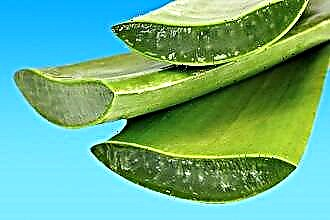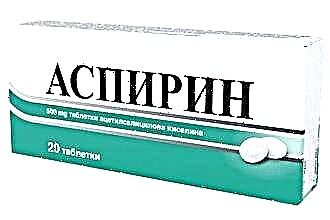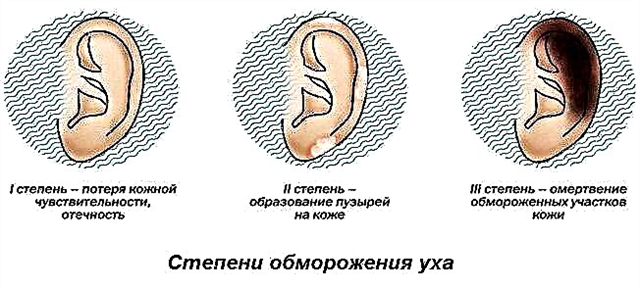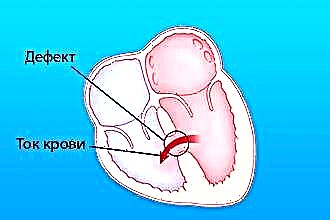Treating the common cold and congestion that accompanies it in children is not an easy task. Parents often note that some pharmaceutical drugs for the nose have many side effects, others seem to be safe, but, unfortunately, are ineffective. Most drops are contraindicated in children, especially small ones. That is why the treatment of nasal congestion in a child at home is often supplemented with folk remedies - herbal inhalations, warming the nasopharynx, massage with essential oils, etc.
It is worth remembering that folk remedies are not always completely harmless, as many are used to thinking. Like any medicine, they can be poorly tolerated by the body, cause side reactions, and help to a greater or lesser extent.
It is important to remember that overuse of traditional medicine is just as dangerous as overuse of pharmaceutical drugs.
In this article, we will show you how to use home remedies for nasal congestion in children in such a way that they are only beneficial and do not harm the health of the child.
Why is the nose stuffed up?
 Disturbed nasal breathing can be caused by either a build-up of viscous mucus in the nose or severe swelling of the mucous membrane. Both the first and the second options are equally capable of obstructing the passage of air through the nasopharynx, as a result of which the nose becomes blocked. It is worth noting that congestion is not a diagnosis at all, but just a symptom that appears with a variety of diseases that differ in causes and manifestations.
Disturbed nasal breathing can be caused by either a build-up of viscous mucus in the nose or severe swelling of the mucous membrane. Both the first and the second options are equally capable of obstructing the passage of air through the nasopharynx, as a result of which the nose becomes blocked. It is worth noting that congestion is not a diagnosis at all, but just a symptom that appears with a variety of diseases that differ in causes and manifestations.
Why is the child's nose blocked? There are several possible reasons:
- viral infection (ARVI, some strains of influenza);
- bacterial rhinitis;
- respiratory allergic reaction;
- sinusitis (the most common is sinusitis);
- vasomotor rhinitis - inflammation of the mucous membrane caused by hypersensitivity of the receptor cells of the nasopharynx;
- polyps in the nasopharynx;
- inflammation of the adenoids (often diagnosed after severe or frequent colds).
The listed diseases have different causes, which means they require different approaches to treatment. There are no universal remedies, including folk remedies, that help absolutely with any type of nasal congestion.
The treatments listed in our article are primarily aimed at treating viral rhinitis (often referred to as the common cold). They can also be a good adjuvant for sinusitis and bacterial rhinitis; at the same time, with allergic and vasomotor rhinitis, they can be harmful.
It is not always possible to independently determine the cause of nasal congestion in a child, and that is why it is so important to consult a pediatrician before using any folk remedy.
Ways to relieve congestion
What to do at home so that the nose can breathe freely again? Based on the above, it is necessary to get rid of two components of congestion - edema and mucus. Let's talk in more detail about how to do this using folk remedies.
Burying
Various homemade nasal drops are very popular among fans of home treatment methods. Vegetable oils, decoctions of medicinal plants, juices, etc. can act as components of such a "preparation".
We offer several recipes for homemade nasal drops:
- Beet juice is one of the most popular remedies. It is suggested to bury freshly squeezed beet juice 1-2 drops into each nostril 2-3 times a day. Carrot juice is also used as an alternative. It is worth noting that digging in undiluted juice is fraught with the development of allergies, in other cases - the formation of a burn of the mucous membrane with fruit acids contained in root vegetables in large quantities. It is recommended to dilute beet juice with boiled water in a 1: 2 ratio. Such drops help to restore nasal breathing due to irritation of the mucous membrane. In this case, the amount of mucus secreted may increase.
- Drops with onion juice have an antimicrobial effect. The onion juice should be diluted with water at least three times, depending on the "pungency" of the variety.
 Aloe juice is also often recommended as drops for a cold, but doctors advise against using this remedy: aloe is one of the strongest allergens.
Aloe juice is also often recommended as drops for a cold, but doctors advise against using this remedy: aloe is one of the strongest allergens.- Oil drops prevent the mucous membrane from drying out, and due to the addition of essential oils, they have an antimicrobial effect and facilitate nasal breathing. To prepare them, take a tablespoon of base oil (sea buckthorn, olive) and add literally a drop of essential oil - tea tree, eucalyptus or pine. Do not overuse oil drops - it is enough to use them 3-4 times a day, 1-2 drops in each nostril.
- As drops, you can also use propolis tincture on glycerin (but not on alcohol!).
At the first instillation of home-made drops, a reduced dosage and concentration of active ingredients are used. For example, juices should be diluted with water, essential oils with base oil. After instillation, the reaction of the body is monitored for a day.
If a child is prone to developing allergic reactions, do not bury his nose with plant juices, decoctions, essential oils, as well as drops containing bee products.
Rinsing the nose
A nasal rinse can be done to get rid of viscous, thick secretions blocking nasal breathing. The procedure is as follows - a warm solution is drawn into a pear, a syringe without a needle or a special bottle and slowly introduced into the nostril. The fluid flows out through the second nostril or through the mouth. Together with the rinse solution, mucus, crusts, and some microorganisms are washed out from the nasopharynx.
As a rinse solution, you can use:
- saline;
- salted water (in composition and properties, it is similar to saline);
- decoction of chamomile;
- weak decoction of eucalyptus leaves.
For infants and children under 5 years of age, rinsing the nose "in an adult way" is contraindicated. Small children do not know how to control the washing process, swallow mucus flowing from the nasopharynx, and can choke. In addition, at an early age, the Eustachian tube, which connects the nasopharynx and the middle ear cavity, is relatively short and wide; this increases the risk of fluid leaking into the middle ear, which can lead to inflammation - otitis media.
If you need to cleanse a small child's nose from a large amount of secretions or crusts, put 4-5 drops of saline in his nostrils, massage the wings of the nose, and after a few minutes, clean the nasal passages with a cotton turunda. If there is too much mucus, use a suction pump or a small rubber bulb to suck it out.
Inhalation
With a cold in a child, steam inhalations give a good effect. For example, inhalation with a baking soda solution helps to loosen mucus, making it easier to blow your nose; inhalation with chamomile and eucalyptus has anti-inflammatory and antimicrobial effects; inhalation with a salt solution moisturizes the mucous membrane and prevents the thickening of mucus in the nose.
The temperature of the liquid for inhalation should not exceed 50 degrees. Inhalation of hot steam is fraught with increased edema and even burns of the mucous membrane.
It should be noted that inhalations facilitate nasal breathing only if the congestion is associated with the accumulation of viscous mucus in the nasal passages - the steam dilutes it and helps to cleanse the nose. If the congestion is caused by edema, inhalation can have the exact opposite effect.The fact is that warm steam warms the nasopharynx - in response to this, the blood vessels expand, and the volume of the mucous membrane increases. That is why, after inhalation, nasal congestion can worsen for a while.
Warmly
The traditional method in the fight against the manifestations of the common cold is warming. The following methods of heat exposure are widely used:
- warm foot baths with mustard powder;
- the imposition of mustard plasters on the feet and calves;
- applying a warm boiled egg to the sinuses and the bridge of the nose;
- warming up with a bag of warm salt.
Thermal procedures are contraindicated when the patient's temperature rises. In addition, one should remember about the vasodilating effect of heat, which can provoke an increase in edema, and, consequently, congestion.
Massage
Massage for nasal congestion is a very ancient and at the same time very effective procedure. To remove congestion, you need to gently massage the point between the eyebrows, the tip of the nose, the area of the temples and maxillary sinuses.
To enhance the effectiveness of the massage, you can lubricate your fingers with a warming ointment (for example, Dr. Mom), or a mixture of base and essential oils, for example, olive oil + tea tree oil, eucalyptus, peppermint. You should not use pure essential oils - they very aggressively affect the delicate baby skin, dry it out, and can even cause irritation.
Vapors of essential oils facilitate nasal breathing, and touching and rubbing stimulates blood circulation in the nasopharynx and sinuses, and prevents stagnation of mucus in the nose. As a result, nasal congestion goes away rather quickly.
Can vasoconstrictors be used?
Home treatment does not necessarily imply the use of only folk remedies - it is possible, and even necessary, to turn to pharmaceutical drugs prescribed by the attending physician. For congestion, the pediatrician usually prescribes children's vasoconstrictor drops (if the child is less than 3 years old) or a spray. It is the most effective remedy for relieving nasal congestion. Vasoconstrictors act on the most common cause of congestion - mucosal edema. Why is everyone so wary of giving them to their children?
Indeed, vasoconstrictor nasal drops, like other potent drugs, have a number of limitations and side effects. At the same time, with their correct use, negative reactions are extremely rare.
The main thing in the use of vasoconstrictor drugs is moderation, i.e. compliance with the frequency, dosage and duration of treatment. They should be used no more than 1 time in 4 hours, for 5-7 days, but no more.
It is impossible to bury the vasoconstrictor "just in case" - it should be done only when urgently needed - when the nose is not breathing.
Conclusions
We discussed how to relieve nasal congestion with folk remedies, as well as pharmaceuticals. Both drugs do not tolerate abuse and experimentation.
Use only the methods approved by the pediatrician - this is necessary when it comes to the health of the child.
Do not forget about the individual reaction of the child's body to various folk remedies: if something helped your friends, it is not a fact that in your case the effect will be the same. And vice versa - if something helps you well, use this tool, but do not get carried away by spreading it too much - your advice can lead to the most unforeseen consequences.

 Aloe juice is also often recommended as drops for a cold, but doctors advise against using this remedy: aloe is one of the strongest allergens.
Aloe juice is also often recommended as drops for a cold, but doctors advise against using this remedy: aloe is one of the strongest allergens.

